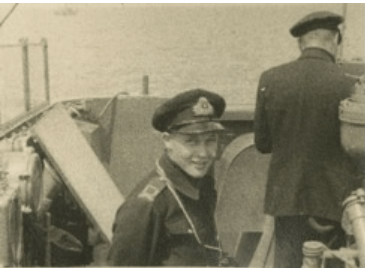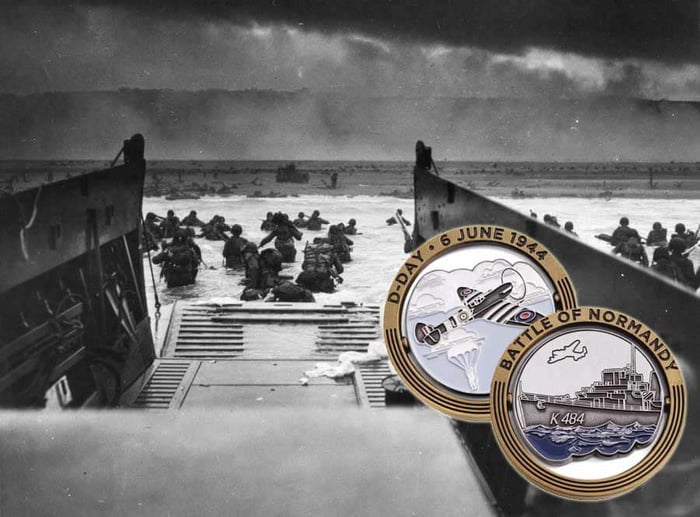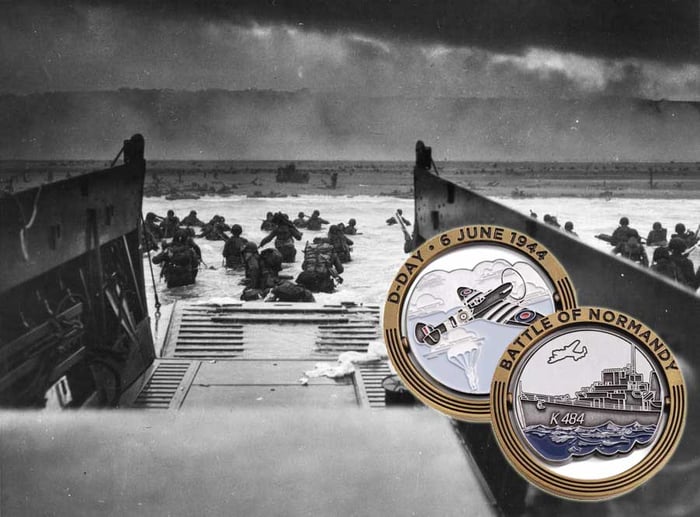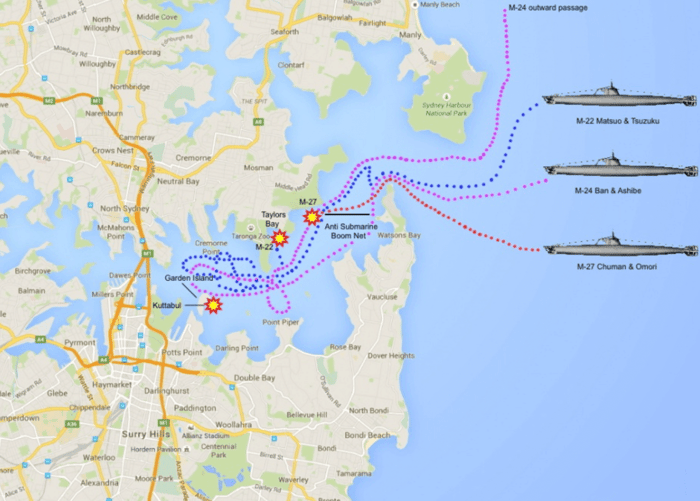
Operation NEPTUNE - D-Day 6 June 1944
This article was originally written by John Perryman for Semaphore. Download a PDF here.
" It is our privilege to take part in the greatest amphibious operation in history - a necessary preliminary to the opening of the Western Front in Europe which, in conjunction with the great Russian advance, will crush the fighting power of Germany."
Admiral BH Ramsay - Allied Naval Commander-in-Chief Expeditionary Force
With those words, promulgated in a Special Order of the Day, the assault phase of Operation OVERLORD, code-named Operation NEPTUNE, began in earnest.
Initial preparations for the naval component of Operation NEPTUNE began in May 1942 when planning staffs were established to look at the problem of conveying a large Allied expeditionary force across the English Channel to land in France. Detailed planning followed in October 1943 at which time Admiral Sir Bertram Ramsay, KCB, KBE, MVO, was appointed Allied Naval Commander-in-Chief, Expeditionary Force.
The task before the Allied navies was immense and the complexities of it were not lost on Ramsay or his staff, many of whom had gained experience in planning amphibious operations mounted in the Mediterranean during 1942-43.
The assault forces were organised into two main task forces, a Western Task Force comprising US forces assigned to land on beaches codenamed Omaha and Utah, and an Eastern Task Force, comprising predominantly British and Canadian forces that were to land on beaches codenamed Sword, Gold and Juno.
Both task forces required sufficient amphibious vessels, of all descriptions, to transport and land approximately a division each on the Normandy beaches in France. In support of the amphibious assault were myriad other vessels including battleships, monitors, cruisers, destroyers, frigates, corvettes, escort craft, minesweepers, motor launches, submarines, merchant ships and numerous ancillary craft.
Raising, training and sustaining such a large and diverse force required careful planning and timing all of which took place under a veil of strict security.
At the time of the D-Day landings on 6 June 1944 the focus of Australia’s navy was the fight against the Imperial Japanese forces spread throughout Southeast Asia and the Pacific. There were, however, a good number of RAN officers and sailors sprinkled throughout the thousands of vessels that made up the mighty invasion armada, many of whom were members of the Royal Australian Navy Volunteer Reserve (RANVR) who had enlisted to serve in the European theatre as early as 1940.
Read: The Role of Australian Forces In the D-Day Landings
One such officer was Lieutenant KR Hudspeth, DSC, RANVR, of Hobart, Tasmania, whose involvement in preparations for D-Day began in January 1944. To him fell the task of covertly landing small combined operations pilotage parties on enemy shores to conduct beach reconnaissance vital to the success of the landings when in command of HM midget submarine X20. For his outstanding courage and devotion to duty he was awarded a bar to his previously earned Distinguished Service Cross (DSC).
On 4 June, Hudspeth, again in X20 and in company with HM midget submarine X23, (Lieutenant GB Honour, RNVR) prepositioned their small submersibles off Normandy in readiness for the invasion and in doing so became the first Allied vessels to arrive in the assault area. There they remained for 48 hours, within three miles of the enemy coast, observing and reporting enemy movements and waiting to illuminate beacons that would serve as navigation markers for the approaching amphibious forces. Admiral Ramsay was later to commend their great skill and endurance adding that:
"Their reports of proceedings, which were a masterpiece of understatement, read like the deck log of a surface ship in peace time, and not of a very small and vulnerable submarine carrying out a hazardous operation in time of war.[1]"

Sub Lieutenant RP Hall, RANVR on the bridge of HMS Kingsmill, 6 June 1944.
In the RN frigate HMS Kingsmill, a young 22 year old Sub Lieutenant Roy Hall, RANVR, was closed up at his action station as the officer in charge of A and B turrets as his ship approached Gold beach. In his diary he recorded his impressions of the great invasion:
"I glanced around at the lads on the guns and wondered if their knees tended to knock with the cold and tension as mine did. We conversed in hushed whispers and speculated when the Germans would suddenly wake up and all hell would be let loose. Still nothing happens and the day growing lighter every minute. We can now see the mass of ships which stretch to the horizon to seaward and up and down the coast which is now a blurred line in the murky morning light."
"Earlier we had seen a tremendous bombardment of the beaches by a force of 1000 plus bombers. The continuous crump of explosions rolled out to us like one long thunderclap. Then a two hour bombardment commenced from a total of 90 battleships, cruisers, destroyers and other gunships on assigned targets ashore. The noise was stupefying - much worse than Sicily. The ships fired slowly and deliberately and great clouds of acrid smelling brown cordite smoke drifted across the anchorage. One huge cloud of smoke and dust obscured the whole coastline which was enveloped in a massive convulsion of explosions. We wondered how anything could possibly survive in that awful inferno. Finally anchored about 0615hrs at a position three miles from shore. Soon after a mass of landing craft crowded with soldiers, all laughing and shouting to our sailors, surrounded us. We returned the banter and wished them good luck as they formed up into flotillas in clouds of spray and disappeared shoreward. The ship strained at her cable in the strong tide and an occasional shell landed in the water nearby with a vicious crack raising a column of white water as if by magic. Some shell splinters hit the ship’s side and superstructure with a loud ‘plink’ which made us all duck on the exposed gun positions but nobody was hit. The gun battery was shortly knocked out by the cruisers HMS Ajax and Argonaut which obtained several direct hits on the gun embrasures. Unknown to me at the time both Alf Pearson and Bob Fotheringham, RANVR were in Ajax. Alf being in charge of a 6-inch twin gun turret."
Several RANVR officers also commanded Fairmile motor launches, motor torpedo boats and harbour defence motor launches, some of which were engaged in brisk actions with their German counterparts known as E-boats.[2]
On the morning of the invasion E-boats were dispersed in the ports of Cherbourg, Boulogne, Le Havre, Ostende and Ymuiden and one early high speed foray against the Eastern Task Force claimed the Norwegian destroyer Svenner which was torpedoed and sunk. E-boats continued their activities nightly and in the frequent actions that took place losses and damage were suffered by both sides.
In the days immediately following the initial landings other Australians, such as Lieutenant Commander FM Osborne, DSC, RANVR, in command of the escort-destroyer HMS Vanquisher, found themselves performing important work escorting small convoys from ports located in the south of England to the Normandy beachhead. Maintaining sea lines of communication was vital to the success of the overarching Operation OVERLORD and the protection of merchant shipping took on many forms. Following his involvement in the D-Day operations Osborne returned to convoy escort work in the Atlantic sinking U-878 on 10 April 1945. In recognition of that action he was awarded a bar to his DSC.
Other Australians could be found serving variously in landing and assault craft and in minesweepers whose important role it was to clear enemy minefields that had been laid in the vicinity of the landing areas.
By the end of the first day of the landings the Allies had secured all five beach heads effectively bringing the naval assault phase to an end. The assault troops and follow-up formations had been landed successfully all along the front, arrangements for the security of the anchorages and sea lines of communication had stood the test of the first day and night satisfactorily, a start had been made in bringing order to the confusion on the beaches and the first convoys of the consolidation phase were arriving in the assault area.[3]
Henceforth the mission entered the post assault period of consolidation during which the naval effort was primarily focused on building up the army to the required size and maintaining its supplies and reinforcements. On 5 July 1944 (D-Day plus 29) the one millionth man was landed in France.
Operation NEPTUNE came to an end on 3 July 1944 at which time the role of the navy merged into the larger OVERLORD operation. For the Australian naval men involved in the D-Day landings, which paved the way for the liberation and restoration of peace in Europe, it was an experience never to be forgotten.
-
↑Admiralty, Battle Summary No. 30 Volume 1, OPERATION NEPTUNE, Landings in Normandy, June 1944, June 1947. p. 74, note 3.
-
↑E-boat (enemy boat): the Royal Navy term given to German high speed and well armed torpedo boats.
-
↑Admiralty, Battle Summary No. 30 Volume 1, OPERATION NEPTUNE, Landings in Normandy, June 1944, p. 112.







.png)




